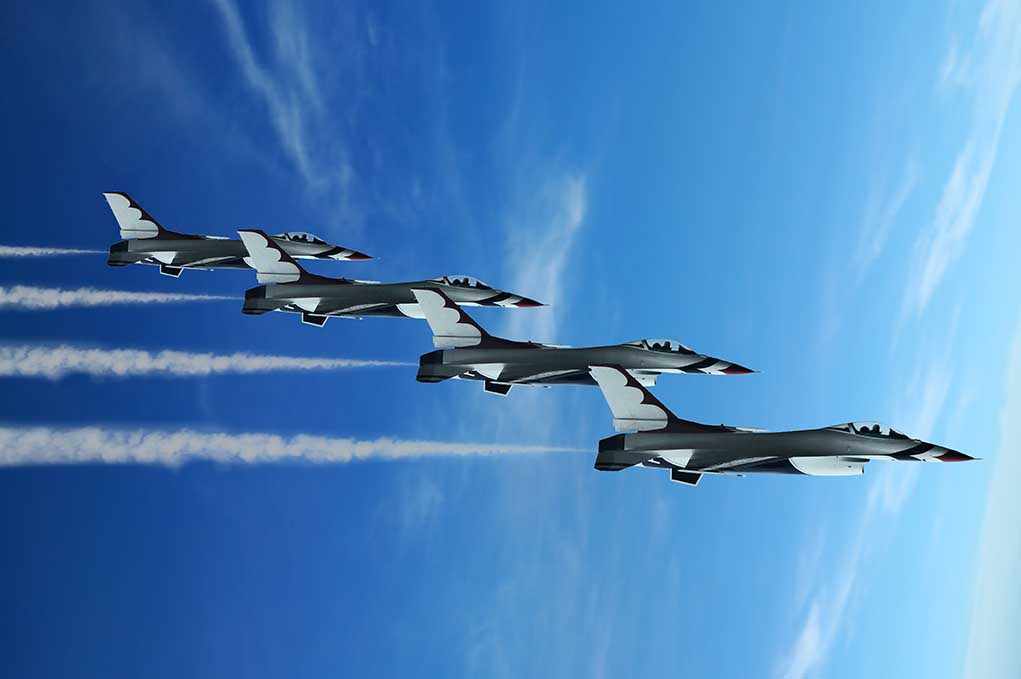
Russian warplanes brazenly probed American airspace near Alaska this week, forcing U.S. fighter jets to scramble in what appears to be Putin’s latest test of Trump’s military readiness.
Story Highlights
- Four Russian military aircraft entered Alaska’s Air Defense Identification Zone on Wednesday
- NORAD deployed multiple F-16s and support aircraft to intercept the Russian bombers and fighters
- The incident follows escalating Russian airspace violations across NATO countries in Europe
- Russian Tu-95 bombers and Su-35 fighters remained in international airspace but tested U.S. response times
Russian Aircraft Test American Defenses
Two Russian Tu-95 strategic bombers and two Su-35 fighter jets entered the Alaskan Air Defense Identification Zone on Wednesday, prompting immediate action from NORAD. The Russian aircraft flew within the ADIZ, a monitored zone of international airspace where foreign military aircraft must identify themselves for national security purposes. NORAD scrambled four F-16 fighters, an E-3 surveillance aircraft, and four KC-135 refueling tankers to intercept and monitor the Russian formation.
Pattern of Escalating Russian Aggression
This Alaska incident represents part of a disturbing pattern of Russian military provocations across multiple theaters. Recent weeks have witnessed Russian aircraft violating Estonian airspace and Russian drones shot down over Poland by NATO forces. These coordinated probes suggest Moscow is systematically testing Western response capabilities and resolve. Defense analysts note that while Russian flights near Alaska occur regularly, the timing amid broader European tensions indicates strategic coordination rather than routine training missions.
NORAD Response Demonstrates Military Readiness
The swift American response showcased the effectiveness of North American aerospace defense systems under the new Trump administration. NORAD officials emphasized their layered defense network successfully detected, tracked, and intercepted the Russian aircraft without incident. The Russian planes departed international airspace after the intercept, demonstrating that firm American military posture effectively deters further escalation. This measured but decisive response reflects the kind of peace-through-strength approach that resonates with Americans who support robust national defense.
Arctic Strategic Competition Intensifies
The Arctic region has become increasingly contested as both Russia and the United States recognize its strategic and economic importance. Russian military flights near Alaska serve dual purposes of intelligence gathering and power projection, allowing Moscow to test American response times while signaling strength to domestic and international audiences. The Alaskan ADIZ, established during the Cold War, remains a critical early warning system against potential threats from the north. These recurring incidents underscore the need for continued investment in Arctic surveillance and defense capabilities.
U.S. intercepts Russian warplanes flying near Alaska https://t.co/rny9vXtRVY
— The Washington Times (@WashTimes) September 25, 2025
Defense experts warn that repeated Russian probes could increase risks of miscalculation, particularly as tensions remain elevated following Russia’s ongoing war in Ukraine. The Trump administration’s approach to these incidents will likely emphasize strength and deterrence while avoiding unnecessary escalation that could lead to broader conflict.
Sources:
U.S. intercepts Russian warplanes flying near Alaska – The Washington Times
U.S. Fighter Jets Intercept Russian Warplanes Near Alaska – Defence Blog














